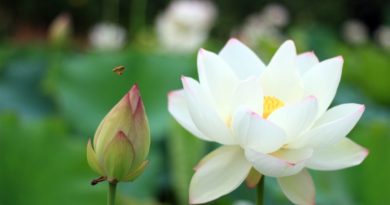Buddhist Dictionary -h-
BUDDHIST DICTIONARY
-H-
habitual kamma: bahula-kamma: s. kamma.
hadaya-vatthu: ‘heart as physical base’ of mental life. The heart, according to the commentaries as well as to the general Buddhist tradition, forms the physical base (vatthu) of consciousness In the canonical texts, however, even in the Abhidhamma Piṭaka, no such base is ever localized, a fact which seems to have first been discovered by Shwe Zan Aung (Compendium of Philosophy, pp. 277ff.). In the Patth. we find repeatedly only the passage: “That material thing based on which mind-element and mind-consciousness element function” (yaṃ rūpaṃ nissāya manodhātu ca manoviññāṇadhātu ca vattanti, taṃ rūpaṃ).
hāna-bhāgiya-sīla, h.-b.-samādhi, h.-b.-paññā: morality, concentration or wisdom connected with decline. The other three stages are: ṭhiti-bhāgiya sīla, etc. morality, etc. connected with a standstill; visesa-bhāgiya sīla, etc.: morality, etc. connected with progress; nibbedha-bhāgiya sīla, etc.: morality, etc. connected with penetration. Cf. A. IV, 179; VI. X, 71.
” ‘Decline’ (hāna) is to be understood with regard to the arising of opposing qualities, ‘standstill’ (ṭhiti) with regard to the standstill of the corresponding attentiveness, ‘progress’ (visesa) with regard to higher excellency, ‘penetration’ (nibbedha) with regard to the arising of perception and reflection connected with the turning away (from existence)” (Vis.M. III). Cf. vodāna (2).
happiness, feeling of h.: s. sukha. – The idea of h. (of the world), s. vipallāsa.
happy courses of existence: s. gati.
harmlessness: s. avihiṃsā.
hasituppāda-citta: lit. ‘consciousness producing mirth’ (smile), is found in the Abhidhammatthasaṅgaha as a name for the joyful mind-consciousness element (manoviññāṇa-dhātu, Tab. I. 72) arising as functional consciousness independent of kamma (kiriya-citta), only in the Arahat. – (App.).
hate and hatelessness: (dosa, adosa) are two of the 6 kammical roots (mūla, q.v.) or root-conditions (hetu; paccaya 1).
hate-rooted consciousness: s. Tab. I. (30, 31).
hate-natured: dosa–carita; s. carita.
health-infatuation: s. mada.
hearer (disciple): sāvaka (q.v.).
heat-element: tejo-dhātu; s. dhātu.
hell: niraya (q.v.).
hetu: ’cause’, condition, reason; (Abhidhamma) root-condition. In Sutta usage it is almost synonymous with paccaya, ‘condition’, and often occurs together with it (‘What is the cause, what is the condition’, ko hetu ko paccayo (Uparipaṇṇāsa-aṭṭhakathā).
In Abhidhamma, it denotes the wholesome and unwholesome roots (mūla, q.v.). In that sense, as ‘root-condition’ (hetu-paccaya; s. paccaya), it is the first of the 24 conditions given in the introduction to the Paṭṭhāna (s. Guide, p. 117). The Dhs (1052-1082) and Paṭṭhāna (Duka-paṭṭhāna; Guide, p. 144) have sections on roots (hetu). – The term is also used (a) for the classification of consciousness, as sa-hetuka and a-hetuka, with and without concomitant root-conditions; (b) for a division of rebirth consciousness into ahetuka, dvihetuka and tihetuka, without, with 2, or with 3 root-conditions (s. paṭisandhi).
Ahetuka-diṭṭhi, the false view of the uncausedness of existence; s. diṭṭhi.
higher wisdom: clear insight based on h. w.: s. vipassanā. Training in H. W., s. sikkhā.
highest knowledge: s. aññā.
hindrances, the 5: nīvaraṇa (q.v.).
hiri-ottappa : ‘moral shame and moral dread’, are associated with all kammically wholesome consciousness (s. Tab. II).
“To be ashamed of what one ought to be ashamed of, to be ashamed of performing evil and unwholesome things: this is called moral shame. To be in dread of what one ought to be in dread of, to be in dread of performing evil and unwholesome things: this is called moral dread” (Pug, 79, 80).
“Two lucid things, o monks, protect the world: moral shame and moral dread. If these two things were not to protect the world, then one would respect neither one’s mother, nor one’s mother’s sister, nor one’s brother’s wife, nor one’s teacher’s wife ….” (A. II, 7). Cf. ahirika . See Aṭṭhasālinī Tr. I. pp. 164ff.
homelessness, going into pabbajjā (q.v.). Cf. Progress of the disciple.
human world: cf. loka, gati.








